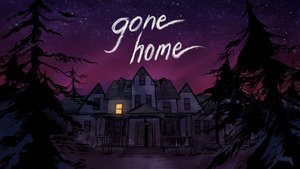

#Gone home sam locker how to#
It's all very natural - you need to figure out how to open the basement door, for example, or find out how to get into Samantha's locker in her room. It's intelligently gated, allowing you to explore rooms in any order you like, but requiring you to find necessary clues to unlock new areas. The house pulls you through the narrative. That emotional heft is a huge credit to the writing and performances in Gone Home. I felt like I was reliving some of my own long-ago memories, with all the jumbled feelings associated with them. The story speaks to universal experiences: the secrets that we keep when we're young, fear of alienation and desire for acceptance, complicated relationships with family. I never expected to see myself in a video gameīut it wasn't just the details that caught me - it was the tone. But I never expected to see myself - or such a strong reflection of myself and my own life - in a video game. And I've enjoyed emotional experiences and fallen for a number of memorable characters in that time. I've mowed down thousands of bad guys and aliens and evil henchmen in my 25-plus-year gaming career. I was surprised by the story, and even more surprised by my reaction. Gone Home resonated deeply for me, partially because the particulars of the story are eerily familiar. The core storyline feels real, like the product of an intense, lived experience, and represents the first time I've personally related to video game characters. Gone Home is emotionally honest and beautifully, subtly written. Every piece of information imparted new details and invited me further into the Greenbriars' world, from the books lying about that show off Dad's past career as a pulp novelist, to hints in Samantha's schoolwork of her wicked sense of humor.

But Gone Home made me want to both savor every moment and sprint forth to the next clue. Gone Home depends on well-drawn characters and the urgency lent by an intriguing mystery, which motivate the player to keep going. That there is no combat - or other mechanics aside from exploration and environmental manipulation - proves that you don't need to kill hordes of people to keep things interesting. It doesn't hurt to be the kind of person who obsessively opened drawers in, say, a BioShock game. Solving the mysteries of the Greenbriar family requires careful observation and at least a rudimentary sense of how to put the pieces together. But that doesn't mean you can go on autopilot and let Gone Home happen to you. There's no combat to distract you, and only a couple of simple puzzles to suss out. Gameplay is first-person exploration - Katie wanders through the various rooms, inspecting objects and letters, collecting useful bits of information. "It's your job to piece together clues and figure out where the hell everyone is" This is Katie's first time in the house - adding to the sense of mystery and unease that permeates Gone Home.
#Gone home sam locker series#
Throughout, Katie's younger sister, Samantha, narrates a series of journal entries, pulling you through the main story, while other threads are revealed through exploring the house and sifting through notes, objects, photos and so on. It's your job to piece together clues in the environment and figure out where the hell everyone is. Upon arriving at the mansion - on a dark and stormy night, of course - she finds it deserted. Gone Home stars Katie Greenbriar, a young woman visiting her family's new home in 1995 after a year of European traveling. It succeeds, thanks to superb writing and a smart, story-driven approach to architecture and level design. Framed as a mystery, and requiring the player to care about its characters' personal lives, Gone Home takes some big risks in a medium that famously struggles with this kind of nuanced story.


 0 kommentar(er)
0 kommentar(er)
